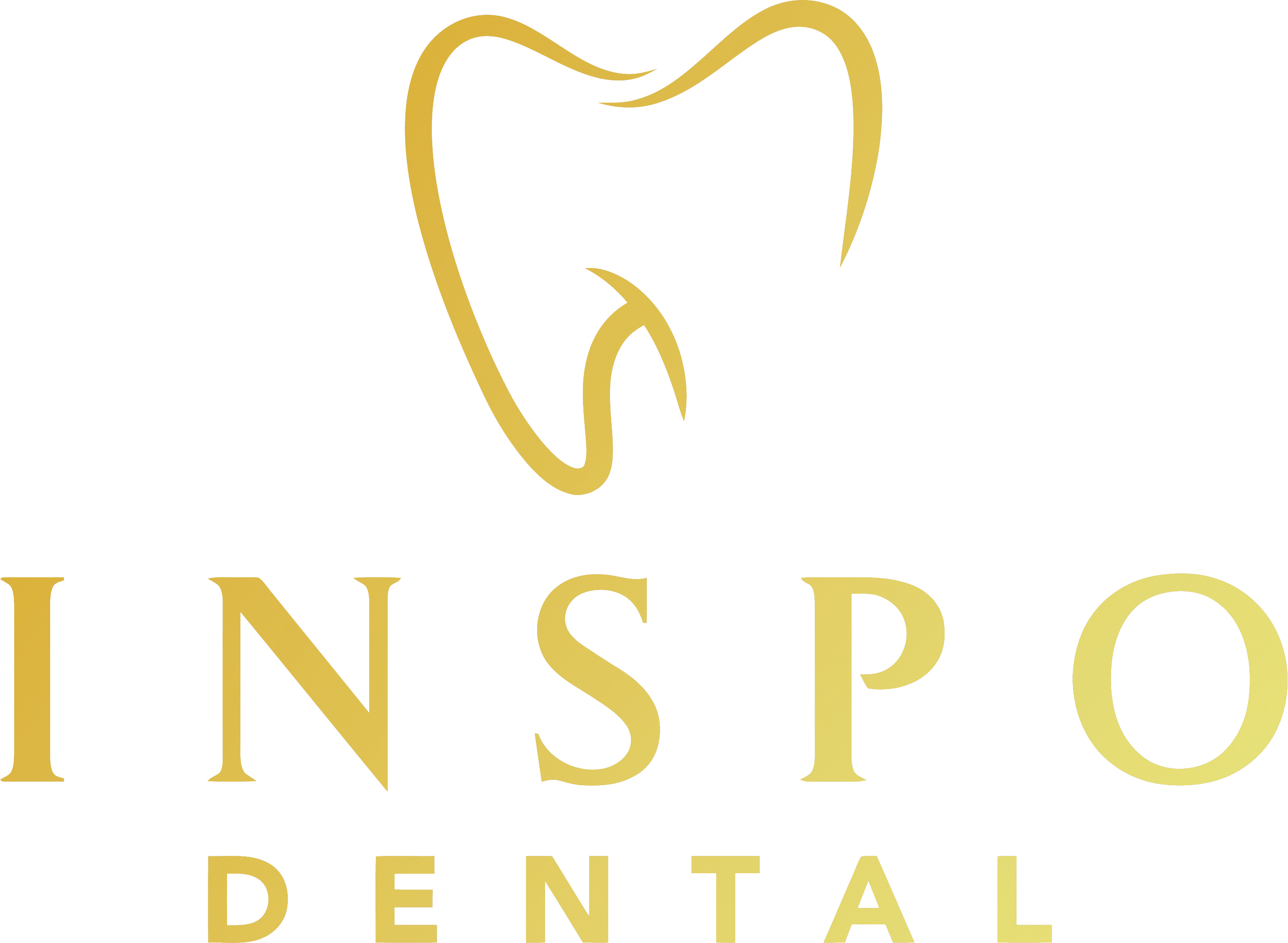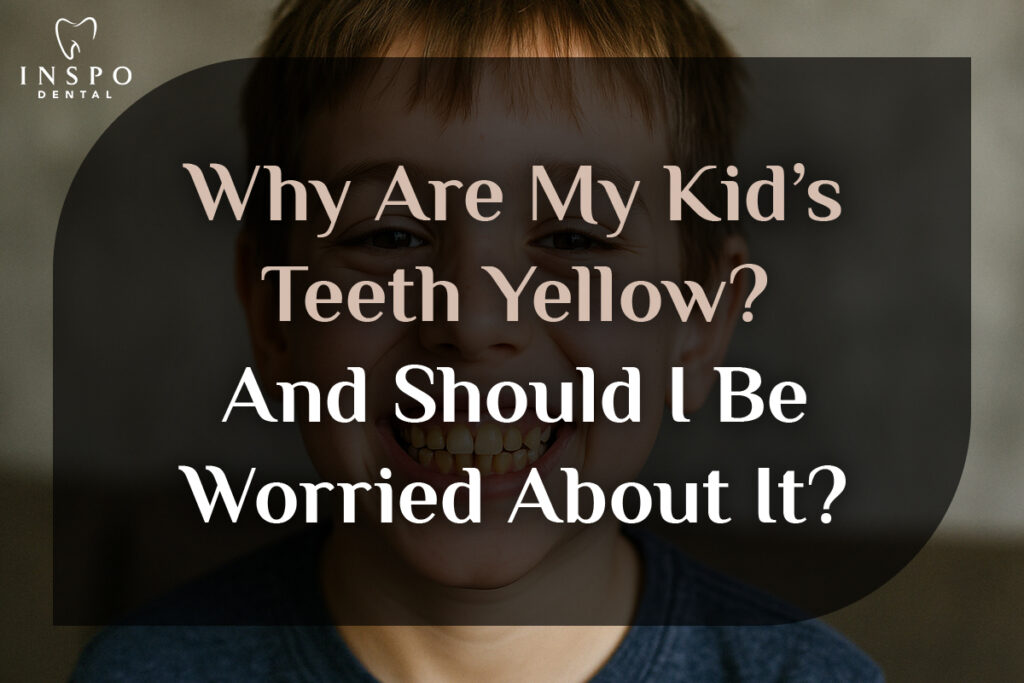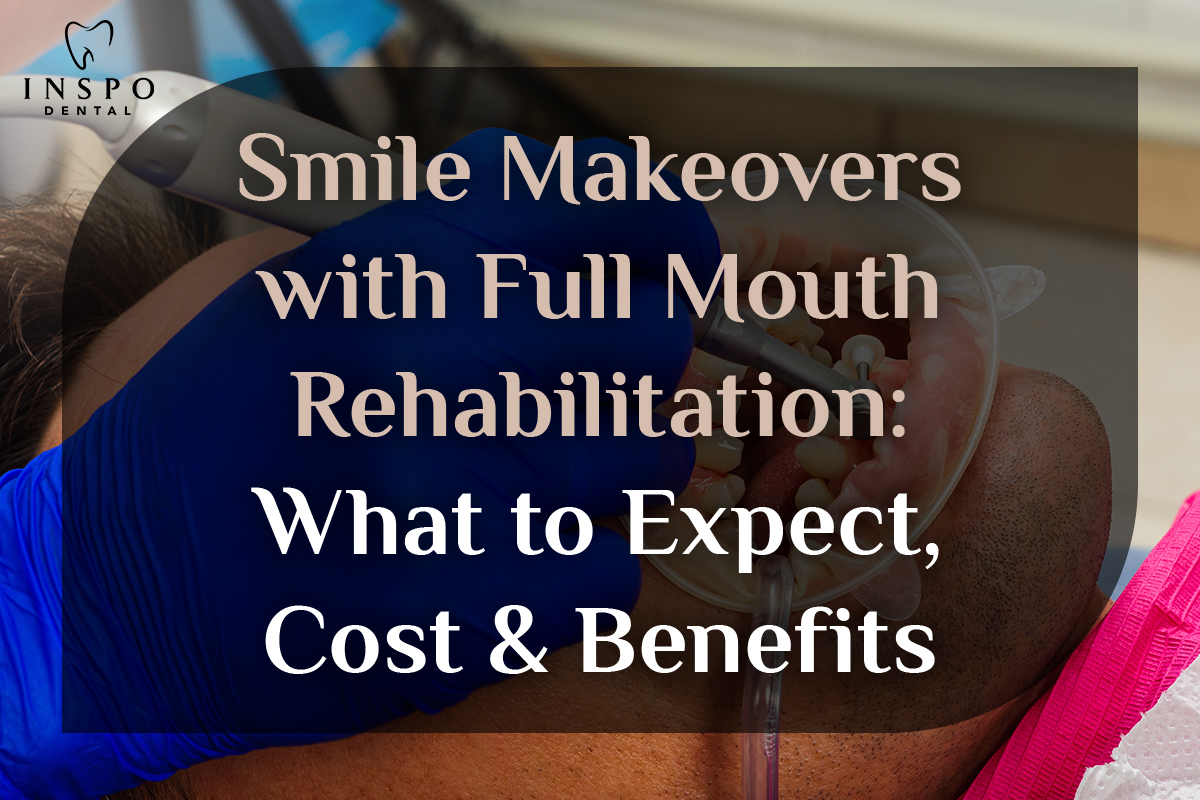As a parent, noticing a change in your child’s teeth, especially if they appear yellow, can be concerning. You’re not alone in asking, “Why are my kid’s teeth yellow?” This is a common concern, and thankfully, in many cases, it’s not as alarming as it may seem.
In this article, we’ll explore:
✅ What causes yellow teeth in children
✅ When it’s normal and when it’s not
✅ Whether you should worry
✅ Practical steps you can take
✅ When to consult a pediatric dentist
🎯 Is It Normal for Kids to Have Yellow Teeth?
Yes—and no.
Children’s teeth naturally go through changes as they grow. Some yellowing can be completely normal, especially during the transition from baby teeth to adult teeth. But in certain cases, discoloration could point to underlying issues like poor hygiene, enamel defects, or even medical conditions.
Understanding the difference between what’s normal and what needs attention can save you stress and help you act appropriately.
🔍 Common Reasons for Yellow Teeth in Kids
Here are some of the most common causes of yellow teeth in children:
✅ 1. Natural Color of Permanent Teeth
Permanent teeth are naturally more yellow than baby teeth because they have more dentin, a yellowish tissue beneath the enamel. Baby teeth are whiter, so when permanent teeth begin to erupt, the contrast can seem stark—but it’s usually not a problem.
✅ 2. Plaque Buildup & Poor Oral Hygiene
If your child isn’t brushing or flossing effectively, plaque and tartar can build up and cause a yellow appearance. This can become worse if your child avoids brushing the back molars or along the gumline.
✅ 3. Dietary Factors
Sugary snacks, soda, and artificially colored foods can stain teeth. Even fruit juices, if consumed frequently, can contribute to discoloration.
✅ 4. Fluorosis
Excess fluoride during early development can lead to fluorosis, which causes white or brownish-yellow spots on teeth. This typically occurs if a child swallows toothpaste regularly or consumes fluoride-rich water in excess.
✅ 5. Medications
Certain antibiotics like tetracycline, when taken during pregnancy or early childhood, can lead to permanent tooth discoloration.
✅ 6. Genetics
Some kids simply inherit naturally yellower enamel or thinner enamel that reveals more dentin beneath.
✅ 7. Trauma or Illness
A fall or injury to the teeth can impact enamel development. Certain medical conditions or high fevers during early years can also affect how teeth form.
🤔 Should You Be Worried?
In most cases, no, especially if the yellowing appears mild and even across all teeth. But here’s when to take a closer look:
❗ Warning Signs That May Need Dental Evaluation:
- Dark yellow, brown, or gray discoloration
- Only some teeth appear yellow while others are white
- Visible pits, grooves, or chalky spots
- Tooth sensitivity or pain
- Persistent bad breath
- Loose teeth not caused by natural shedding
If any of the above are present, it’s best to consult a pediatric dentist.
🧼 What Can You Do About It?
If your child’s yellow teeth are caused by surface stains or poor hygiene, these steps can help:
🪥 1. Improve Brushing Techniques
Teach your child to brush for at least 2 minutes, twice a day. Use a soft-bristled toothbrush and fluoride toothpaste—and supervise to make sure they aren’t swallowing it.
🧵 2. Floss Daily
Flossing helps clean areas a toothbrush can’t reach—between the teeth and along the gumline.
🥦 3. Watch Their Diet
Limit sugary snacks, soda, and juices. Offer water and calcium-rich foods like yogurt and leafy greens to support healthy enamel.
🧃 4. Rinse After Staining Foods
Encourage rinsing with water after meals or snacks that may stain, such as berries, sauces, or colored candies.
🦷 5. Schedule Regular Dental Visits
A professional cleaning every six months can remove tartar and surface stains. The dentist can also assess if the yellowing is due to something more serious.
🚫 Avoid These Mistakes
- Don’t use whitening toothpaste on young kids—they can be too abrasive for developing enamel.
- Don’t panic if only the new adult teeth look yellow—this is often a natural part of the transition.
- Don’t skip dental checkups, even if everything looks fine on the surface.
👨⚕️ When to See a Pediatric Dentist
Make an appointment if:
✅ The discoloration is uneven or worsening
✅ Your child has pain, swelling, or sensitivity
✅ You notice signs of decay or enamel erosion
✅ You’re unsure whether the yellowing is normal
A pediatric dentist can provide an accurate diagnosis and recommend safe, age-appropriate solutions such as professional cleaning, fluoride treatments, or gentle whitening (if necessary and age-appropriate).
💖 A Note to Caring Parents
Parenting doesn’t come with a manual—and noticing yellow teeth in your child may feel like a red flag. But remember:
👉 Your concern means you’re doing your job right.
Every child is different. Their dental journey will be too. What’s important is being proactive, not perfect. You don’t have to have all the answers—just the awareness and willingness to ask the right questions.
So if you’re here wondering, “Should I worry?”—the very fact that you’re asking shows you’re a parent who cares deeply. And that makes all the difference.
🌿 Preventive Dental Strategies for a Healthier Smile
Taking preventive steps today can spare your child from dental issues tomorrow. Here’s how:
✅ 1. Create a Reward-Based Routine
Use sticker charts, tooth fairy traditions, or small non-food rewards to reinforce good habits.
✅ 2. Lead by Example
Let your child see you brushing and flossing. It makes them more likely to follow through.
✅ 3. Educate, Don’t Scare
Instead of saying “Your teeth will rot,” try “Brushing helps keep your teeth strong so you can eat your favorite foods!”
✅ 4. Choose the Right Tools
Pick age-appropriate toothbrushes with soft bristles, fun designs, and timers. Use a gentle fluoride toothpaste approved by dentists.
✅ 5. Schedule Pediatric Dental Appointments Early
Start dental visits by the first birthday or when the first tooth erupts. Early visits build familiarity and trust.
📘 Glossary: Simple Dental Terms Every Parent Should Know
Term | Meaning |
Dentin | The yellowish layer under enamel; gives teeth their natural color |
Enamel | The hard, white outer layer of the tooth; protects against decay |
Plaque | A sticky film of bacteria that forms on teeth and gums |
Tartar | Hardened plaque that needs to be removed professionally |
Fluorosis | Staining or discoloration caused by too much fluoride in early development |
Eruption | The process of new teeth coming through the gums |
Caries | Another term for cavities or tooth decay |
🧒 “Teeth Talk”: Explain It to Your Child
Want to help your child understand their teeth better? Use this kid-friendly explanation:
“Your teeth are like little superheroes in your mouth! Some are baby teeth and some are big-kid teeth coming in. Sometimes they look a little yellow—just like how bananas turn yellow—but that doesn’t mean they’re bad. It just means they need a little more cleaning and brushing to stay strong and shiny!”
Let your child choose their toothbrush color, set a timer with their favorite song, or name their teeth—it makes hygiene fun instead of a chore.
📲 Let’s Keep Smiles Bright – Together!
If you found this guide helpful, don’t keep it to yourself!
✅ Share this blog with fellow parents
✅ Post it in your parenting groups, WhatsApp circles, or school communities
✅ Tag a parent who cares
✅ And remind everyone: It’s okay to ask questions about your kid’s health—it’s how we grow together.
🧠 Psychology Behind Yellow Teeth: What Your Child May Feel (And How to Support Them)
It’s easy to focus on physical appearance—but don’t underestimate the emotional impact that visible yellow teeth can have on a child’s self-esteem.
Even young children can feel self-conscious about their appearance, especially if:
- A sibling has noticeably whiter teeth
- Friends at school point it out
- They’re teased or questioned
- They’ve seen bright smiles in cartoons, videos, or toothpaste ads
🫂 As a Parent, You Can:
✅ Normalize it by explaining that everyone’s teeth are different
✅ Avoid negative comments like “Your teeth are dirty”
✅ Use affirming language: “Your teeth are strong, and that’s what matters most.”
✅ Frame hygiene routines as self-care, not punishment
✅ Celebrate effort, not perfection (“I love how well you brushed today!”)
Creating a positive association with oral hygiene in early years leads to better habits, healthier smiles, and more confidence in the long run.
📈 Growth Phase: Yellowing During Mixed Dentition (What It Is & Why It Matters)
Between the ages of 6 to 12, children go through what dentists call the “mixed dentition” phase—a period where both baby teeth and adult teeth are present.
During this time, yellowing is especially noticeable because:
- Permanent teeth erupt naturally darker
- They appear larger and more prominent than baby teeth
- Contrast between white baby teeth and new adult teeth exaggerates discoloration
This is completely normal and should be expected. The important part is to keep monitoring for:
✅ Evenness of color
✅ Healthy gum lines
✅ Smooth eruption (no crowding or tilting)
✅ Absence of decay or erosion
📝 Tip: Keep a photo record every 6 months—you’ll notice the gradual alignment and color improvement with time and care.
🧪 Enamel Erosion in Kids: The Silent Factor Behind Yellowing
While many parents focus on brushing, they often overlook a major contributor to yellow teeth in kids—enamel erosion.
When enamel wears down, the underlying yellow dentin becomes more visible.
Common Causes of Enamel Erosion:
- Frequent consumption of acidic drinks (e.g., soda, citrus juices)
- Brushing too hard or too soon after eating acidic food
- Dry mouth due to certain medications
- Acid reflux (especially in younger children)
How to Protect Your Child’s Enamel:
✅ Wait 30 minutes after eating before brushing
✅ Use a soft-bristled toothbrush
✅ Offer milk, cheese, or yogurt—they neutralize acid
✅ Encourage water between meals
✅ Avoid brushing immediately after orange juice or candy
🔄 The “Cycle of Neglect”: Why Ignoring Yellow Teeth Can Lead to Bigger Issues
It might be tempting to dismiss yellowing as a cosmetic issue—but left unaddressed, it can create a ripple effect:
🔁 Phase 1: Child becomes aware and embarrassed
🔁 Phase 2: They resist brushing or flossing
🔁 Phase 3: Plaque and tartar worsen discoloration
🔁 Phase 4: Potential decay, bad breath, or gum issues
🔁 Phase 5: Emotional withdrawal or lower confidence
🛡️ Break the cycle early by turning concern into action. The earlier you step in, the easier it is to restore both smile and confidence.
🛑 What Not to Do If Your Kid’s Teeth Are Yellow
Let’s be clear—well-intentioned mistakes can make the situation worse. Avoid:
🚫 Over-brushing (can erode enamel)
🚫 Using baking soda or charcoal products (too abrasive for kids)
🚫 Comparing your child’s teeth to others (every child develops differently)
🚫 Delaying dental visits out of fear they’ll be judged
Instead, focus on routine, education, and professional guidance.
🎨 Cosmetic & Safe Treatment Options for Yellow Teeth in Kids
For cases where yellowing is beyond normal, and where confidence or social interaction is being affected, there are safe, non-invasive options available to improve tooth color—tailored specifically for children.
Here are some professional solutions a pediatric dentist may recommend:
🧼 1. Professional Cleaning
Sometimes, a simple professional polish can remove surface stains that regular brushing can’t. This is the first step before considering any treatment.
🌬️ 2. Air Polishing
This gentle, non-abrasive method uses a stream of air, water, and a fine powder to remove stains painlessly—ideal for kids with sensitive teeth.
🦷 3. Resin Infiltration or Bonding (For Severe Fluorosis or Enamel Defects)
If enamel is mottled or deeply discolored, dentists may use resin infiltration to even out color and protect the surface. It’s minimally invasive and safe for older children or teens.
🚫 What’s Not Recommended:
- Over-the-counter whitening kits
- Charcoal toothpaste or baking soda treatments
- Laser whitening systems (not tested or approved for pediatric use)
💬 Always consult a dentist before pursuing any cosmetic procedures for your child. Early, preventive care is always preferred over cosmetic correction.
❓ Frequently Asked Questions (FAQs)
🔄 Do Baby Teeth Turn Yellow Over Time?
Yes, baby teeth can discolor due to poor oral hygiene, diet, or medications. However, they are typically whiter than permanent teeth. Any visible yellowing should be checked if it’s spreading or looks uneven.
🦷 Are Yellow Teeth in Kids a Sign of Cavities?
Not always. Cavities typically start as white spots or dark holes, not yellow. But if yellowing is accompanied by pain or visible holes, consult a dentist promptly.
🌊 Can Fluoride Cause Yellow Teeth?
Excess fluoride, especially during early development, can cause fluorosis—leading to chalky white or yellowish-brown patches. Controlled use of fluoride is safe and essential for healthy teeth.
🧽 Can I Whiten My Child’s Teeth at Home?
No. Over-the-counter whitening products are not recommended for children. They can damage enamel or lead to tooth sensitivity. Always consult a pediatric dentist before considering whitening.
🧬 Is Yellowing Always Related to Hygiene?
No. Genetics, enamel thickness, dentin exposure, or even minor illnesses in early childhood can play a role. That’s why a personalized dental evaluation is crucial.
🔎 Myth-Busting: The Truth About Yellow Teeth in Children
❌ Myth 1: Yellow teeth always mean bad hygiene
Truth: Not necessarily. Natural dentin color, dietary habits, or genetics might be the cause. Good hygiene is important, but yellow doesn’t always equal dirty.
❌ Myth 2: Whitening toothpaste is safe for kids
Truth: Most whitening toothpastes are too abrasive for children and can damage their developing enamel.
❌ Myth 3: All yellow teeth need whitening
Truth: Most yellowing in kids is temporary or natural—especially during the mixed dentition phase (when baby and permanent teeth coexist).
❌ Myth 4: Brushing harder will remove the yellow
Truth: Brushing too hard can wear down enamel, exposing more dentin (which is yellow) and worsening the problem.
✅ Easy Daily Dental Routine for Kids (Checklist for Parents)
Help your child follow this simple daily routine to promote brighter, healthier teeth:
Time | Task | Notes |
🕖 Morning | 🪥 Brush for 2 minutes | Use fluoride toothpaste (pea-sized for 3+) |
🧵 After Brushing | 🧵 Floss gently | Start early (age 2-3) with help |
🥣 After Meals | 🚰 Rinse with water | Helps remove food particles & acids |
🛌 Before Bed | 🪥 Brush again | Critical to remove bacteria from the day |
📆 Weekly | 📅 Review food & drink habits | Limit sugary snacks, include calcium |
🦷 Every 6 Months | 👨⚕️ Dental visit | Keep checkups consistent and friendly |
Make dental care fun and routine-based—use timers, songs, or colorful brushes to engage younger kids.
📍 Conclusion: Yellow Isn’t the Enemy—Neglect Is
Your child’s yellow teeth don’t define their health—or their future. But your attention, involvement, and action absolutely do.
When treated with awareness and care:
✅ Mild yellowing becomes a phase, not a problem
✅ Dental visits become fun, not feared
✅ And smiles—real, healthy smiles—shine brighter than ever
Let your child grow in confidence, backed by your calm, informed, and compassionate approach.
📞 Need Personalized Advice?
If you’re looking for gentle, child-friendly dental care or just need help understanding your child’s oral health better, consider scheduling a visit with a trusted pediatric dentist in your area.
🦷 Your child deserves a bright, confident smile—and you deserve peace of mind.






